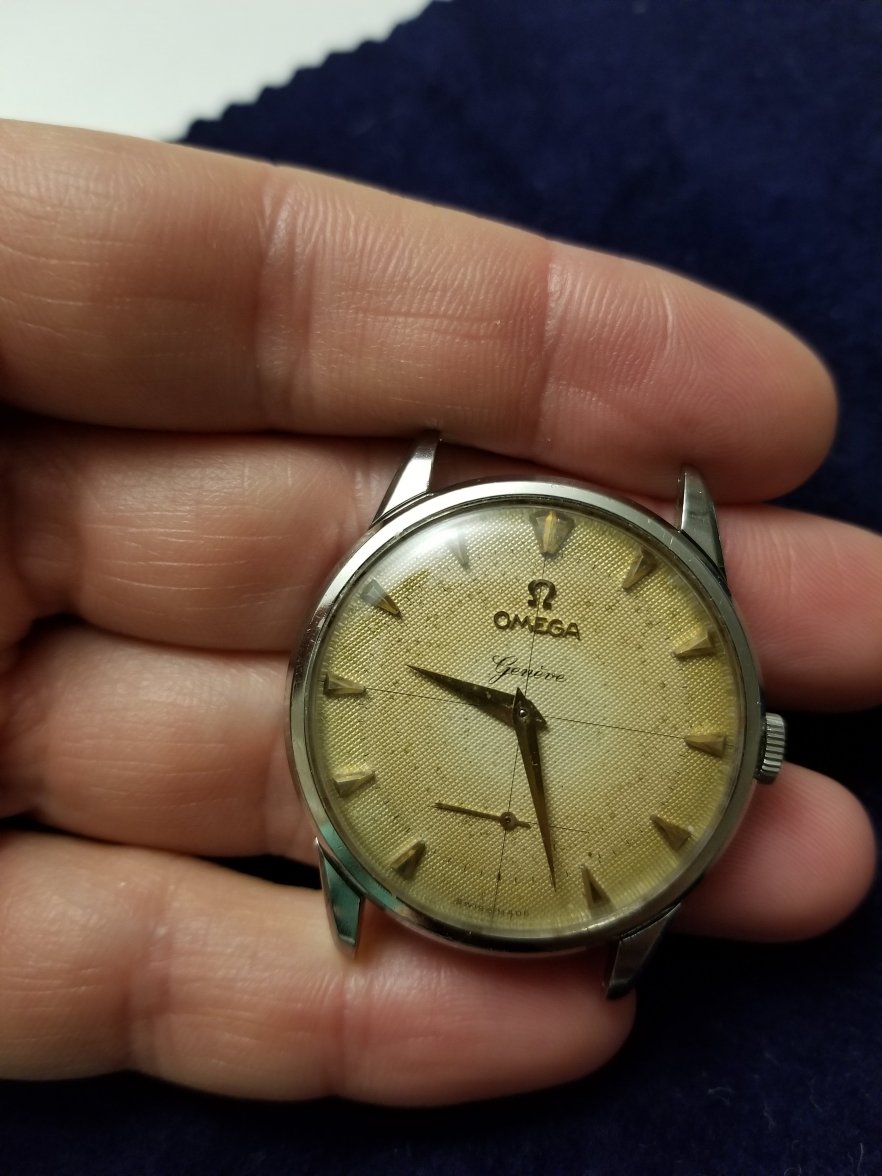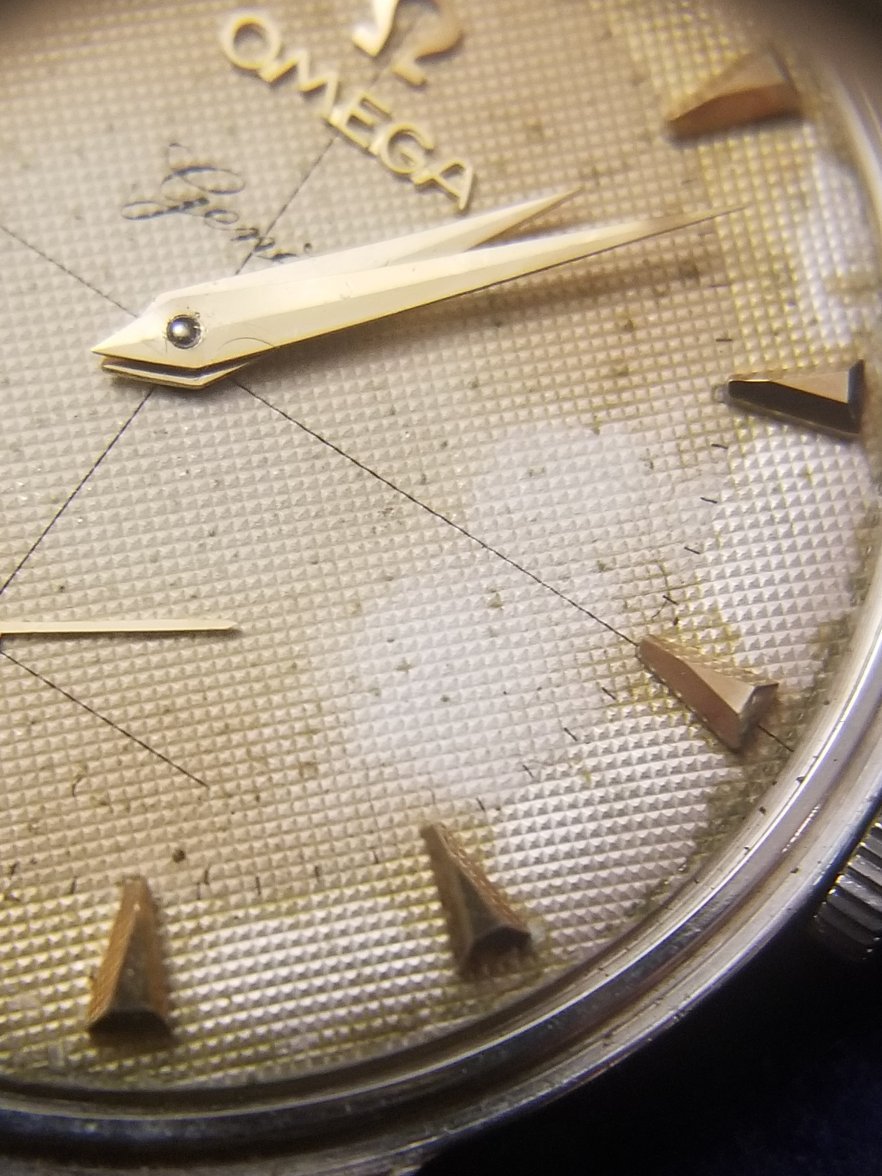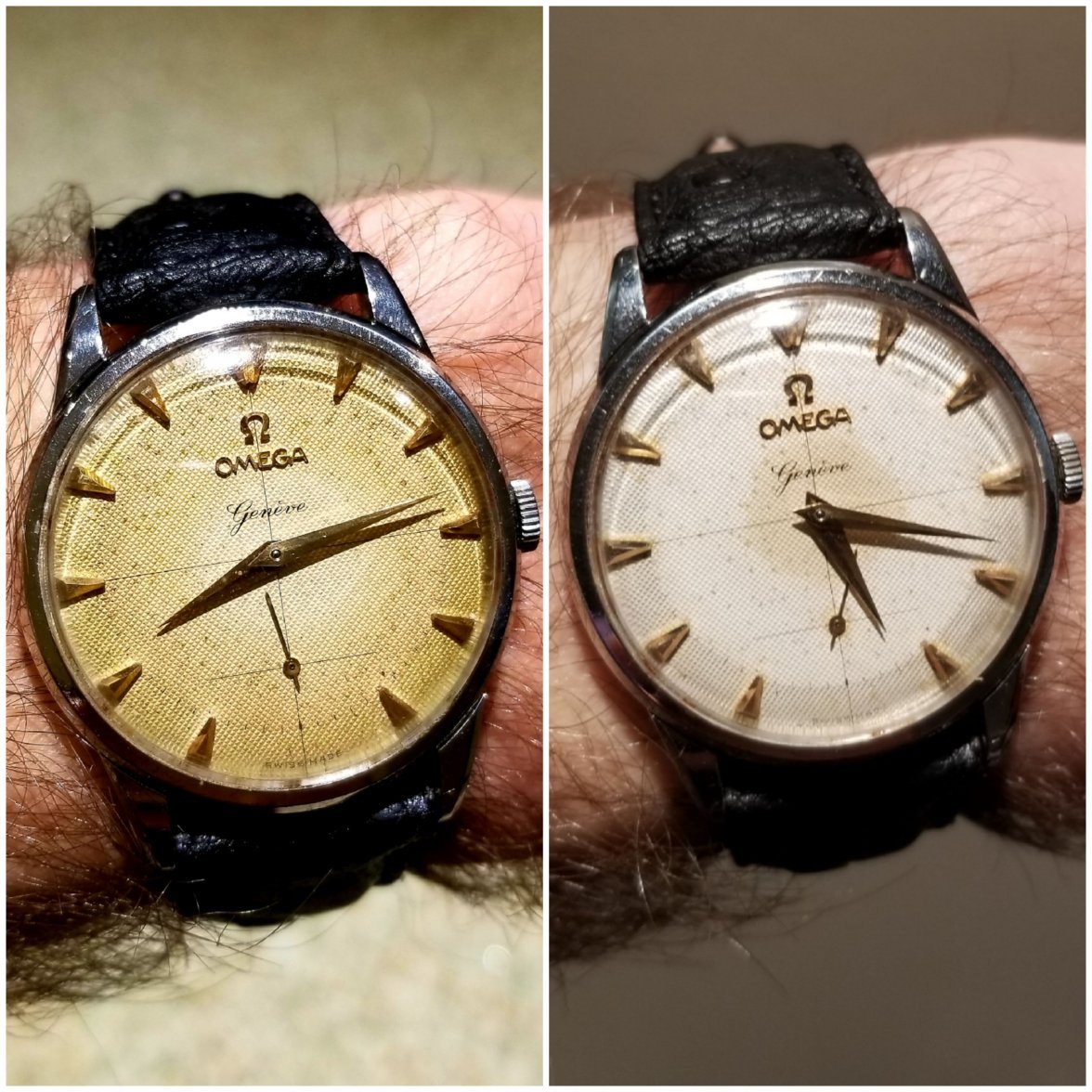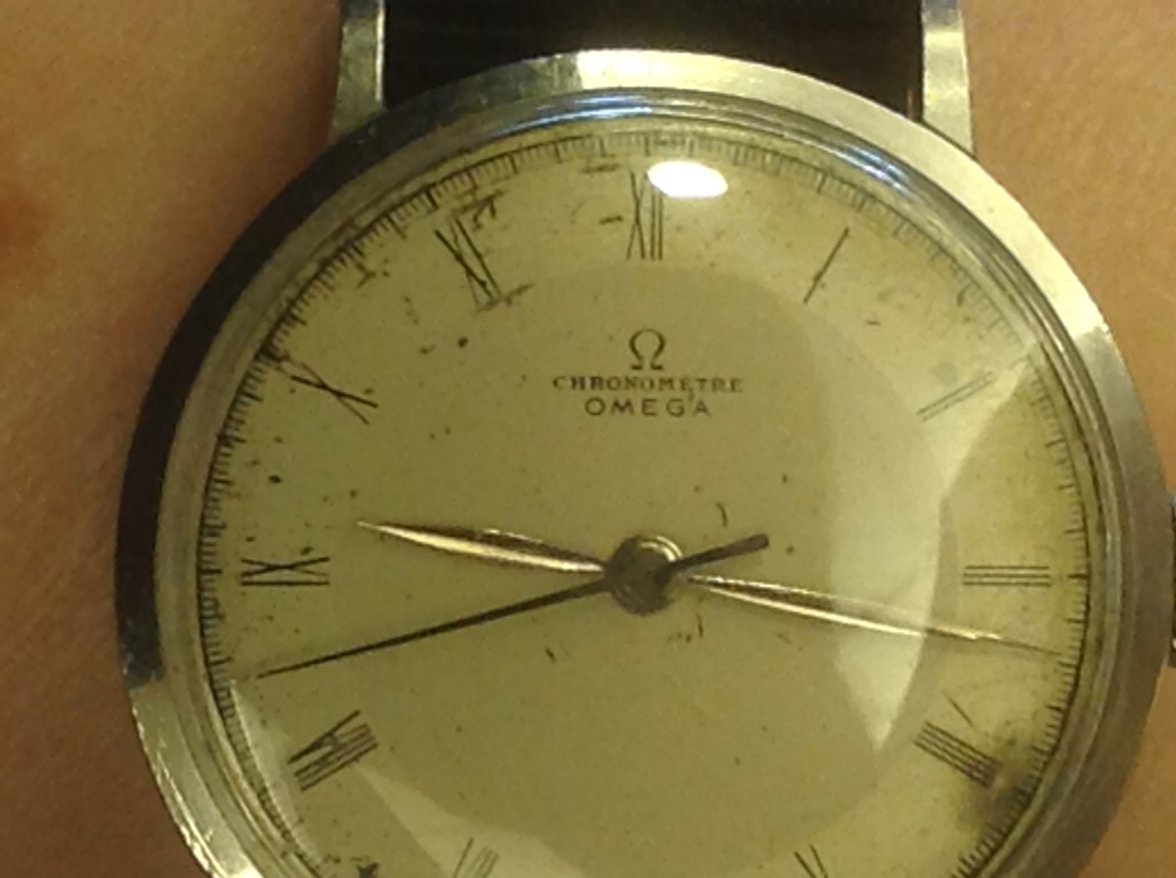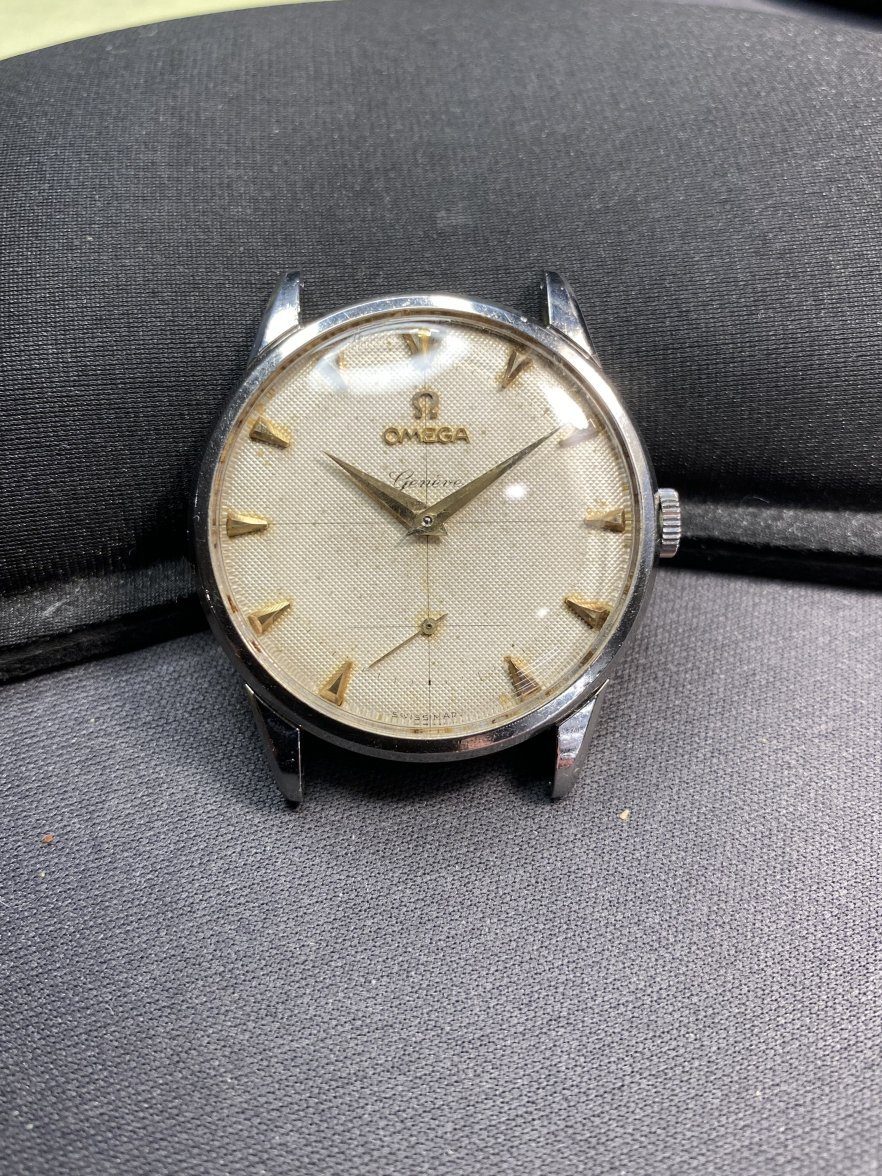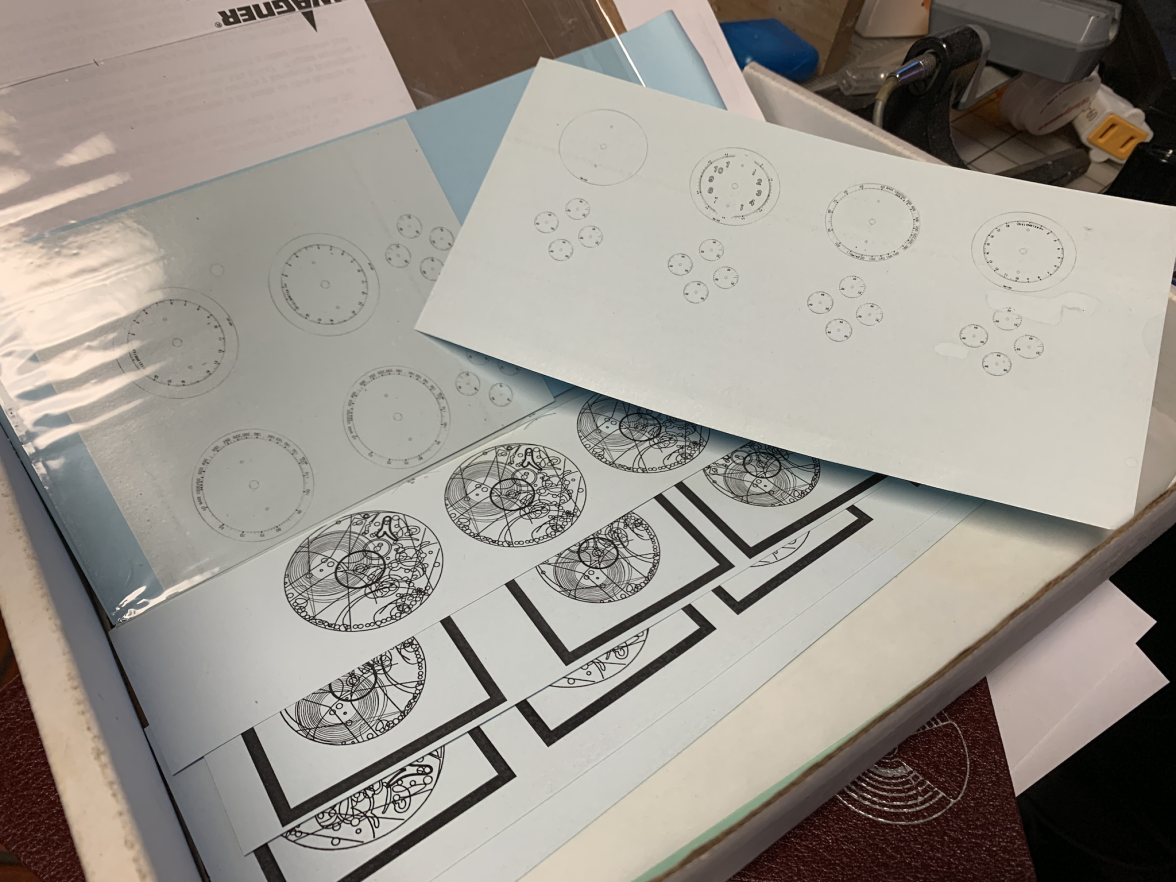MikeMan2727
·Last night I tried my first dial cleaning, so I wanted to share the results in case it will help anyone down the road.
Please be aware that while this worked for me, it might not work for everyone and results may vary. If you don't want to accidentally ruin a dial, you may consider trying it on a watch of lower importance / lower value.
The watch I wanted to try was a jumbo Geneve 2748-1. When I purchased it, I noticed a lot of brown sticky residue on the case that looked like smoking residue. The case cleaned up easily with a damp cloth so I wanted to see if the dial could also clean up.
I decided to start the cleaning with a small piece of Rodico. I started on the outermost aspect of the dial which is obscured by the crystal. This way, if the cleaning did not go as planned, the failure would be masked. The Rodico brought up a little dirt, but nothing spectacular. I did not rub the dial, just dabbed with light pressure.
I moved on to a damp Qtip, again starting with the outer dial rim. I sprayed the Qtip with a water sprayer bottle and then rolled the tip in my fingers to compact the cotton. I started by rolling the Qtip on the dial and noticed that brown dirt was starting to come up.
Again, no rubbing or hard pressure, just lightly rolling the dial and letting the damp Qtip pull up the dirt. As the Qtip cotton began to deform, I pulled off pieces and compacted the tip for more accurate cleaning.
About an hour and many Qtips later I got the result below. The center, which was originally lighter in color is actually a stain and now appears darker than the surrounding dial. I didn't want to scrub too hard and risk losing text or the crosshairs.
I'm happy with the result and feel like it accentuates the silvered dial, markers, and dial texture nicely. Most importantly, I did not lose any dial text with this method.
I don't think this method will work for deep-set stains, but may prove useful with dirty dials and former smokers' watches.
What do you guys prefer - heavy smoker patina or the cleaner dial?
Please be aware that while this worked for me, it might not work for everyone and results may vary. If you don't want to accidentally ruin a dial, you may consider trying it on a watch of lower importance / lower value.
The watch I wanted to try was a jumbo Geneve 2748-1. When I purchased it, I noticed a lot of brown sticky residue on the case that looked like smoking residue. The case cleaned up easily with a damp cloth so I wanted to see if the dial could also clean up.
I decided to start the cleaning with a small piece of Rodico. I started on the outermost aspect of the dial which is obscured by the crystal. This way, if the cleaning did not go as planned, the failure would be masked. The Rodico brought up a little dirt, but nothing spectacular. I did not rub the dial, just dabbed with light pressure.
I moved on to a damp Qtip, again starting with the outer dial rim. I sprayed the Qtip with a water sprayer bottle and then rolled the tip in my fingers to compact the cotton. I started by rolling the Qtip on the dial and noticed that brown dirt was starting to come up.
Again, no rubbing or hard pressure, just lightly rolling the dial and letting the damp Qtip pull up the dirt. As the Qtip cotton began to deform, I pulled off pieces and compacted the tip for more accurate cleaning.
About an hour and many Qtips later I got the result below. The center, which was originally lighter in color is actually a stain and now appears darker than the surrounding dial. I didn't want to scrub too hard and risk losing text or the crosshairs.
I'm happy with the result and feel like it accentuates the silvered dial, markers, and dial texture nicely. Most importantly, I did not lose any dial text with this method.
I don't think this method will work for deep-set stains, but may prove useful with dirty dials and former smokers' watches.
What do you guys prefer - heavy smoker patina or the cleaner dial?
